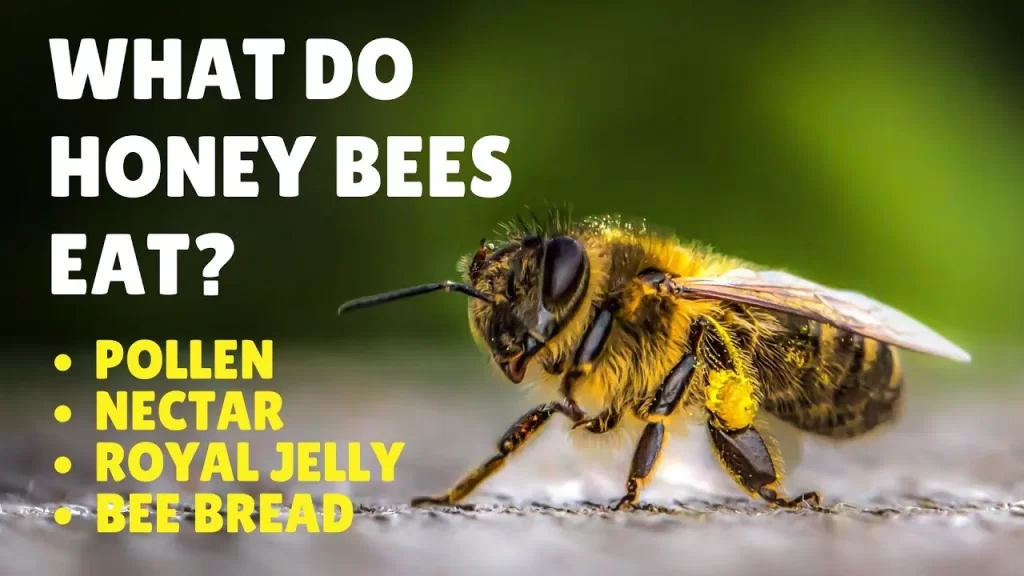Bees, those tiny buzzing creatures responsible for pollination and honey production, play a vital role in maintaining the balance of our ecosystem. However, have you ever wondered how long these industrious insects can survive without food?
In this blog post, we will explore the fascinating world of bees and delve into the factors that determine their survival period when food is scarce.

Importance of Bees in Our Ecosystem
Bees are not only essential pollinators but also keystone species, meaning they have a disproportionately large impact on their ecosystem relative to their abundance. According to research conducted by the Food and Agriculture Organization (FAO), approximately 75% of global food crops rely to some extent on pollination by bees and other pollinators. Without bees, the production of fruits, vegetables, nuts, and seeds would be severely compromised, leading to a decline in food availability and increased food prices.
The Role of Food in a Bee’s Life
The survival and well-being of bees are closely tied to their access to food resources. During the larval stage, young bees are fed with a mixture of pollen and nectar known as “bee bread.” This nutritious diet allows them to grow rapidly and develop into healthy adults. As adult bees, they collect nectar and pollen from flowers to sustain themselves and the colony. Nectar serves as their primary energy source, while pollen provides essential proteins and nutrients.
How Long Can Bees Survive Without Food?
The survival duration of bees without food largely depends on various factors, including species, season, and available resources. On average, a bee can survive for approximately 1 to 3 days without access to food. However, this duration can significantly vary under different circumstances.
Example: Winter Survival
During the winter months, bees face an acute shortage of food due to the scarcity of flowers. To cope with this challenging period, honeybees form a winter cluster inside the hive, where they huddle together and generate heat by vibrating their wing muscles. This cluster allows them to conserve energy and survive for several months with limited food supplies.
Table: Bee Consumption of Food per Season
| Season | Nectar Consumption (grams) | Pollen Consumption (grams) |
| Spring | 500 – 750 | 150 – 200 |
| Summer | 1000 – 1500 | 250 – 350 |
| Autumn/Fall | 750 – 1000 | 200 – 300 |
| Winter | 200 – 300 | Minimal |
Adaptations for Surviving Food Scarcity
To endure periods of food scarcity, bees have developed remarkable adaptations. One such adaptation is the ability to enter a state of torpor, where they lower their metabolic rate to conserve energy. This enables bees to extend their survival during challenging times until food becomes available again.
Example: Honey Storage
Honeybees are renowned for their ability to produce and store honey, which serves as their primary food reserve during lean times. Honey is created by converting nectar into a concentrated, sugary substance with low water content. This preservation method ensures that the honey does not spoil and can be consumed throughout the winter.
Factors Affecting Bee Survival
Bee Species
Different bee species exhibit varying degrees of resilience to food deprivation. For instance, bumblebees (genus Bombus) are generally more robust in surviving harsh conditions compared to some solitary bee species. Honeybees, due to their social structure and honey stores, are also relatively resilient during times of food scarcity.
Season and Climate
Survival rates during food scarcity can be influenced by the time of year and prevailing climatic conditions. Bees face greater challenges during harsh winters or extreme heat when food sources are scarce. Unpredictable weather patterns caused by climate change can exacerbate these challenges and impact the availability of food resources.
Available Resources
The proximity and abundance of food resources also play a significant role in bee survival. Urbanization and changes in land use have led to the loss of natural habitats and reduced the availability of food plants for bees. Efforts to create pollinator-friendly landscapes and protect natural habitats can positively impact bee populations.
Conserving Bee Populations
Given the critical role bees play in pollination and maintaining biodiversity, conserving bee populations is of utmost importance. There are several ways we can contribute to their preservation:
Planting Bee-Friendly Gardens
Creating gardens with a variety of flowering plants that provide nectar and pollen throughout the year can support bee populations. Native plants are particularly beneficial, as they are well-adapted to the local environment and attract a diverse range of pollinators.
Reducing Pesticide Use
Pesticides, especially neonicotinoids, have been linked to bee population decline. Using alternative pest management methods and opting for bee-safe pesticides can protect bees while still managing pests effectively.
Supporting Local Beekeepers
Supporting local beekeepers not only promotes the production of local honey but also helps in maintaining healthy bee colonies. Many beekeepers are actively involved in bee conservation and sustainable beekeeping practices.
Conclusion
Bees are incredible insects that contribute immensely to our ecosystem and food production. Understanding their ability to survive without food and the factors affecting their survival is essential in ensuring their continued well-being. By taking steps to protect and support bees, we can safeguard the delicate balance of nature and secure a sustainable future for generations to come.
In conclusion, the survival time of bees without food can vary, but it is generally limited to a few days. However, their adaptations, such as honey storage and entering a state of torpor, enable them to endure longer periods of food scarcity.
It is crucial to highlight the impact of seasonal variations on bee survival. During the spring and summer, when flowers are abundant and blooming, bees can collect a substantial amount of nectar and pollen. They become more active, and their nutritional needs increase significantly. As shown in the table, bees consume larger amounts of nectar and pollen during these seasons to support their hive’s growth and reproduction.
Conversely, in the autumn/fall, as the availability of flowers decreases, bee consumption reduces as well. During this period, bees focus on foraging and storing enough food reserves to sustain the colony through the winter. They become more selective in choosing flowering plants that offer high-quality resources.
Winter is the most challenging season for bee survival due to the scarcity of flowers. Bees must rely solely on the honey they stored during the warmer months. As temperatures drop, the cluster of bees inside the hive tightens, and they consume honey to generate heat, conserving energy to survive the cold. This impressive adaptation allows honeybees to survive the entire winter until spring brings fresh sources of food.
Regarding bee species, some solitary bees, which lack a social structure and honey stores, are more vulnerable during periods of food scarcity. Solitary bees often lay their eggs in individual nest cells and provide a small food supply for each larva. Therefore, these species may have a limited ability to endure extended periods without food.
Climate change poses significant challenges to bee survival. Extreme weather events, unpredictable rainfall patterns, and alterations in flowering times can disrupt the synchronization between bees and their food sources. Such changes can lead to food shortages, affecting bee populations and overall ecosystem health.
The conservation of bees is crucial for global food security and biodiversity. Governments, organizations, and individuals must work together to protect and support these vital pollinators. Some additional measures to conserve bee populations include:
Promoting Organic Farming
Encouraging and supporting organic farming practices reduce the use of harmful pesticides and chemicals that negatively impact bees. Organic farms provide healthier habitats for bees and other pollinators, helping to maintain diverse and thriving populations.
Creating Wildflower Corridors
Planting wildflower corridors and restoring natural habitats can provide a rich and continuous source of food for bees across landscapes. These corridors can connect fragmented habitats, enabling bees to travel and forage more efficiently.
Educating the Public
Raising awareness about the importance of bees and their role in the ecosystem is crucial. Educational campaigns can promote responsible behavior towards bees, such as avoiding the destruction of their nests and understanding the harmful effects of certain practices, like the excessive use of lawn pesticides.
Engaging Beekeeping Communities
Collaborating with beekeepers and beekeeping associations can facilitate the exchange of knowledge and best practices for sustainable beekeeping. Encouraging beekeepers to adopt practices that prioritize bee health and minimize stress on colonies can significantly contribute to bee conservation efforts.
In conclusion, bees are not only fascinating creatures but also indispensable for maintaining a healthy ecosystem and ensuring global food security. Their survival without food is a complex subject influenced by various factors, including species, seasonal variations, and the availability of resources. By understanding these factors and taking concrete actions to conserve bees and their habitats, we can secure a thriving environment for both bees and humans alike. Through individual efforts and collective initiatives, we can contribute to the well-being of these tiny but mighty pollinators and safeguard the delicate balance of nature. Let us cherish and protect these incredible insects for the benefit of current and future generations.
Frequently Asked Questions (FAQ)
Q1: How essential are bees in our ecosystem?
A1: Bees are crucial pollinators responsible for 75% of global food crops’ pollination, ensuring food production and ecosystem stability.
Q2: What role does food play in a bee’s life?
A2: Food, such as nectar and pollen, is essential for the growth and development of bees, from larval stages to adulthood.
Q3: How long can bees survive without food?
A3: On average, bees can survive approximately 1 to 3 days without access to food, but this can vary depending on circumstances.
Q4: What adaptations do bees have for surviving food scarcity?
A4: Bees have developed adaptations like entering a state of torpor and storing honey to extend their survival during food shortages.
Q5: How do different bee species differ in their ability to survive without food?
A5: Bee species exhibit varying degrees of resilience, with some, like bumblebees and honeybees, being more robust than solitary bee species.
Q6: How does season and climate impact bee survival during food scarcity?
A6: Bees face greater challenges during harsh winters or extreme heat, which affects their access to food resources.
Q7: What is the role of honey storage in bee survival during winter?
A7: Honey storage enables honeybees to create a food reserve to sustain the colony throughout the winter when flowers are scarce.
Q8: How can we conserve bee populations?
A8: Conserving bee populations involves planting bee-friendly gardens, reducing pesticide use, supporting local beekeepers, and creating wildflower corridors.

